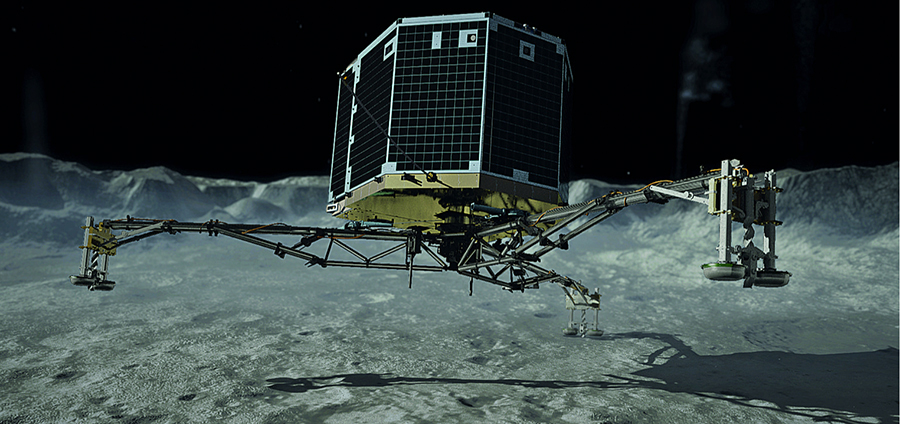| << Chapter < Page | Chapter >> Page > |

Let’s define upward to be the + y -direction, perpendicular to the surface of the comet, and to be at the surface of the comet. Here’s what we know:
If we define a system that consists of both Philae and Comet 67/P, then there is no net external force on this system, and thus the momentum of this system is conserved. (We’ll neglect the gravitational force of the sun.) Thus, if we calculate the change of momentum of the lander, we automatically have the change of momentum of the comet. Also, the comet’s change of velocity is directly related to its change of momentum as a result of the lander “colliding” with it.
and just after was
Therefore, the lander’s change of momentum during the first bounce is
Notice how important it is to include the negative sign of the initial momentum.
Now for the comet. Since momentum of the system must be conserved, the comet’s momentum changed by exactly the negative of this:
Therefore, its change of velocity is
Check Your Understanding The changes of momentum for Philae and for Comet 67/P were equal (in magnitude). Were the impulses experienced by Philae and the comet equal? How about the forces? How about the changes of kinetic energies?
The impulse is the change in momentum multiplied by the time required for the change to occur. By conservation of momentum, the changes in momentum of the probe and the comment are of the same magnitude, but in opposite directions, and the interaction time for each is also the same. Therefore, the impulse each receives is of the same magnitude, but in opposite directions. Because they act in opposite directions, the impulses are not the same. As for the impulse, the force on each body acts in opposite directions, so the forces on each are not equal. However, the change in kinetic energy differs for each, because the collision is not elastic.

Notification Switch
Would you like to follow the 'University physics volume 1' conversation and receive update notifications?